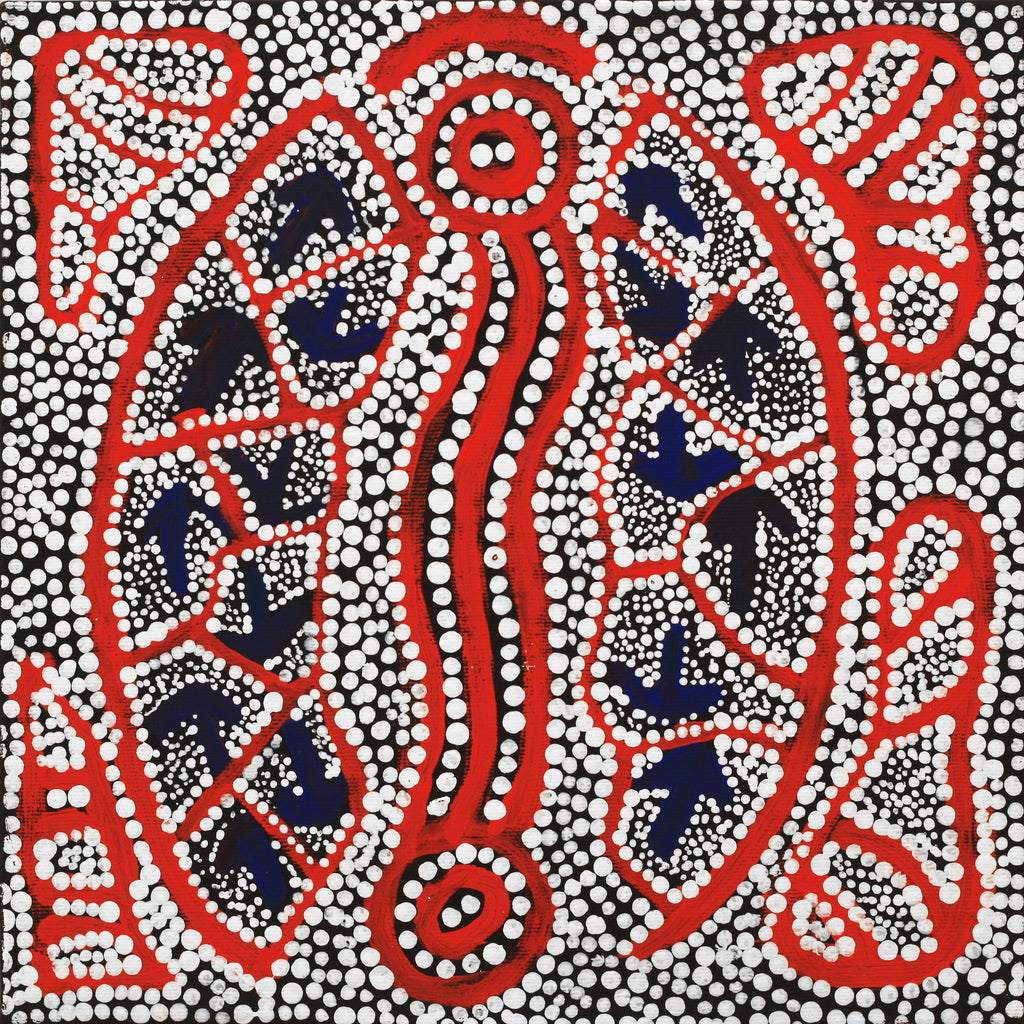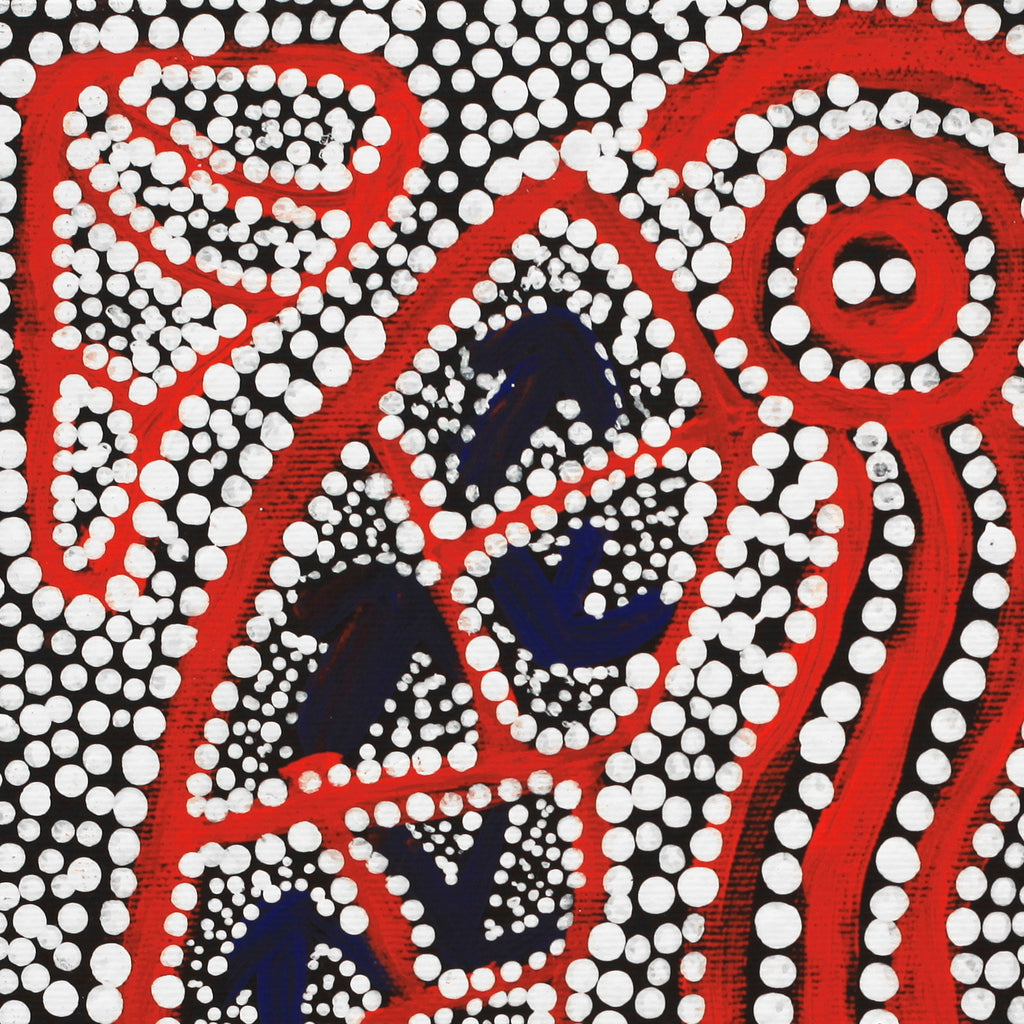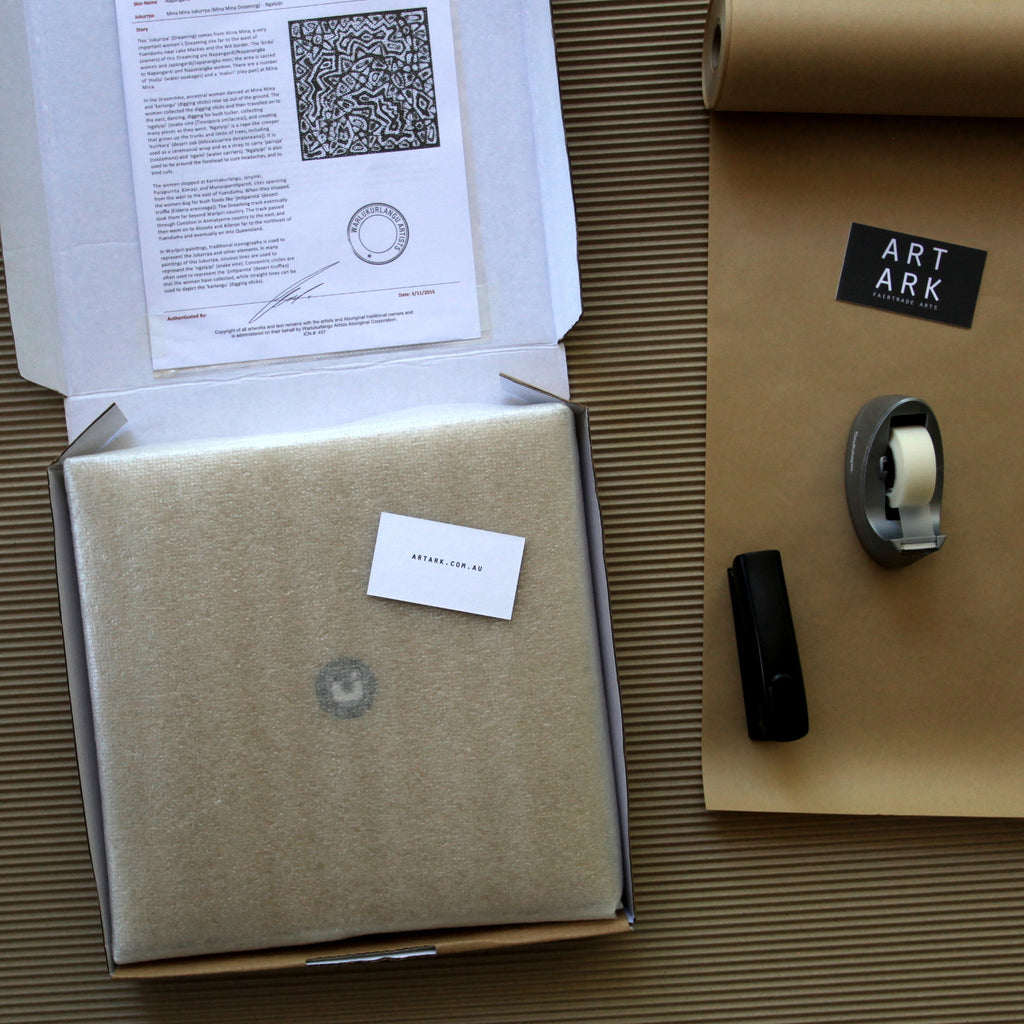





Shakira Napaljarri Morris, Yankirri Jukurrpa (Emu Dreaming) - Ngarlikirlangu, 30x30cm
Your support helps the artist and their community art centre.
Free insured post & 120-day returns Ships from Tasmania within 1 business day Arrives in 1–3 days (Aus) · 5–10 days (Int’l*) Guaranteed colour accuracy
Community Certified Artwork
This original artwork is sold on behalf of the community-run art centre. It includes their Certificate of Authenticity.
– Original 1/1
- Details
- Artwork
- Artist
- Aboriginal Artist - Shakira Napaljarri Morris
- Community - Yuendumu
- Aboriginal Art Centre - Warlukurlangu Artists Aboriginal Corporation
- Catalogue number - 6231/19
- Materials - Acrylic on pre-stretched canvas
- Size(cm) - H30 W30 D3.5
- Postage variants - Artwork is posted stretched and ready to hang
- Orientation - Painted from all sides and OK to hang as wished
This painting depicts a ‘yankirri Jukurrpa’ (emu [Dromaius novaehollandiae] Dreaming) from a place called Ngarlikurlangu, approximately 50kms north of Yuendumu. The ‘kirda’ (owners) of this Dreaming are Nangala/Nampijinpa women and Jangala/Jampijinpa men.
This Jukurrpa tells the story of a ‘yankirri’ (emu) and a ‘wardilyka’ (bush turkey [Ardeotis australis]). ‘Yankirri’ lived at a soakage to the west called Warnirripanu (or Walangkamirirri), while ‘wardilyka’ lived at a soakage to the east called Parirri. The emu and bush turkey used to go around the country picking ‘yakajirri’ (bush raisins [Solanum centrale]) and mashing them into ‘kapurdu’ (fruit balls) to save in their nests for later. However, they were jealous of each other; the emu thought that the bush turkey was picking the best and juiciest ‘yakajirri’, and was leaving him with only the sour ‘yakajirri’.
The emu went to the bush turkey’s nest to the east while the bush turkey was out hunting and smashed up the ‘kapurdu’ that the bush turkey had saved there. When the bush turkey returned, he found his smashed ‘yakajirri’ balls and realized that the emu had destroyed them. He went to the west to confront the emu and when he found him, they got into a big fight. The bush turkey eventually flew away to the north, leaving behind the smashed ‘yakajirri’ balls.
This practice of making ‘kapurdu’ (fruit balls) is a traditional Warlpiri method of storing ‘yakajirri’; in the old days, people used to dry the ‘yakajirri’, grind them up with a rock in a coolamon, mix them with water and form balls from them, and cover the ‘kapurdu’ with red ochre so they would keep.
Today at Ngarlikirlangu we can see round, red rocks which are the ‘kapurdu’ that the emu smashed up. There is also a dance for this ‘yankirri’ (emu) Jukurrpa that is performed during mens’ initiation ceremonies. A number of other Jukurrpa are also located at Ngarlikirlangu, including ‘wardilyka Jukurrpa’ (bush turkey Dreaming), ‘yardijiinypa Jukurrpa’ (meat ant Dreaming), and ‘pirntina Jukurrpa’ (woma or Ramsay’s python [Aspidites ramsayi] Dreaming). Lots of ‘yakajirri’ grow around the Ngarlikirlangu area today.
In contemporary Warlpiri paintings, traditional iconography can be used to represent the Jukurrpa, associated sites, and other elements. ‘Yankirri’ are usually represented by arrow-like shapes depicting their ‘wirliya’ (footprints) as they walk around.
Gracie Napangardi Butcher Formerly Florrie Napangardi Jones was born in 1967 in Yuendumu, a remote community located 290 km north-west of Alice Springs in the Northern Territory of Australia. When young, Florrie moved to Alice Springs with her family. She attended Yirara College in Alice Springs and the Institute for Aboriginal Development (Aboriginal Corporation) where she studied Spoken and Written English. She wanted to learn more and to read and write. Florrie began painting with Warlukurlangu Artists Aboriginal Corporation, an Aboriginal owned and governed art centre located in Yuendumu, in 1987 but it wasn’t until 2008, when she returned to Yuendumu to be near her family that she began painting full time. Both her sister Mary Napangardi Butcher and her Aunty Daisy Napanangka Nelson (1930 – 2001) are well-known artists and together they would often paint on the same piece of artwork. Florrie paints her Pikilyi Jukurrpa stories – Pikilyi is a sacred water hole that never dries out. These Dreamings depict country and describe journeys across the land, its features and the plants and animals that inhabit it. These stories were passed down to her from her father’s side and have been passed down for millennia. Florrie loves to paint as it connects her to her culture. When she is not painting she looks after her daughter and spends time with her family.
"Fantastic customer service from Guy." - Renae, Aus – ART ARK Customer Review





















